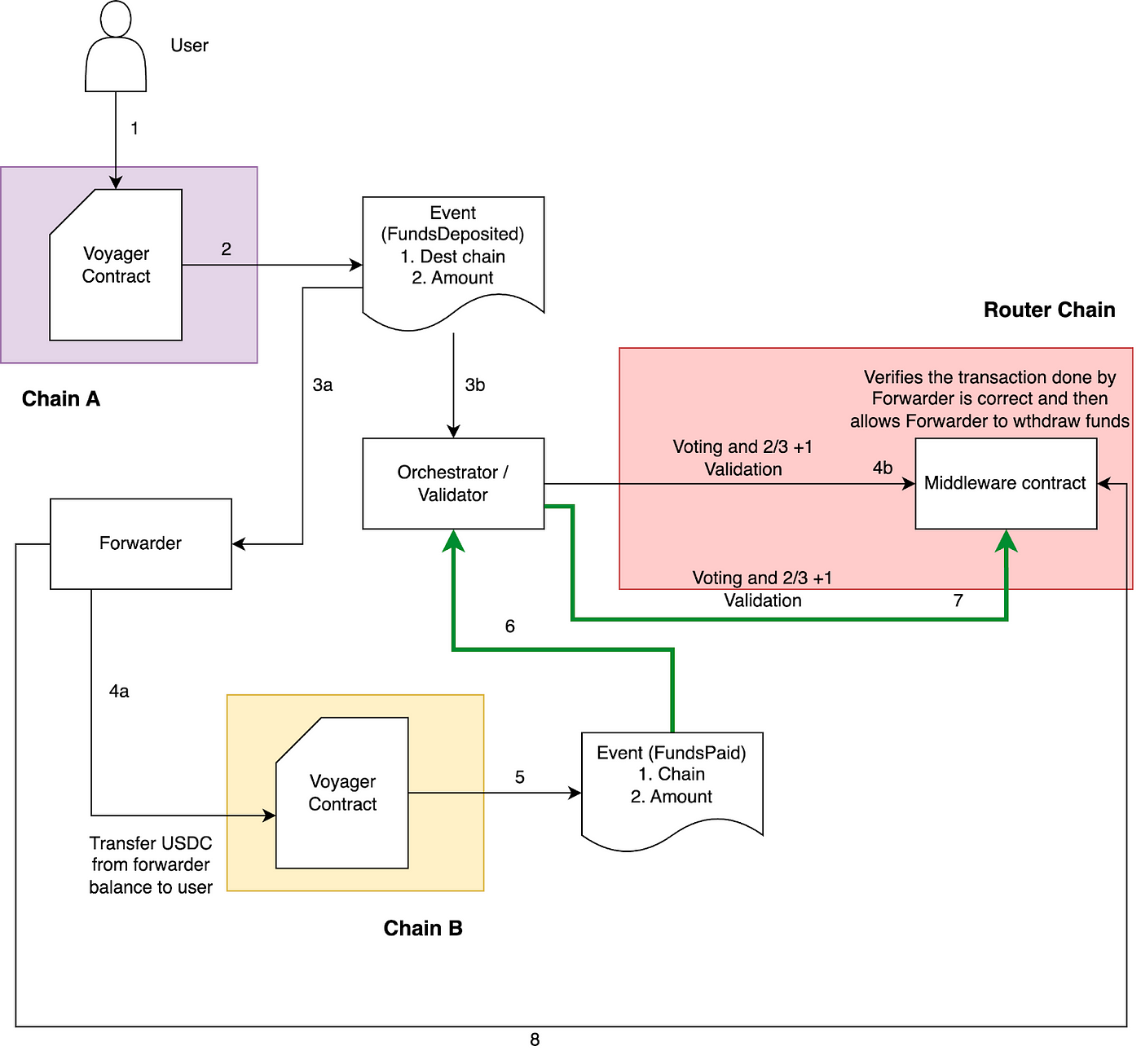
A Comprehensive Tech Overview
Gearing Up for Fortnightly Tech Updates
Over the past few months, we’ve been hard at work optimising our Chain, launching IDApps and paving the way for our Asset Transfer Bridge. In this blog, we’ll give you a quick rundown of our latest tech advancements. Consider it your essential guide to ensure you’re up to speed and ready to make the most of the upcoming tech fortnightly updates. So, let’s gear up and prepare for the return of our Biweekly Tech Updates!
New Architecture, Optimisations, and more…
Our Chain, an interoperability hub built at a crucial intersection of decentralisation, scalability, and security, has been optimised from various aspects in the last couple of months.
The blockchain is focused primarily on enabling state transitions across networks, and it sits as a hub between various EVM and non-EVM ecosystems. In this light, we have added Tron and Near to our ecosystem! Along with connectivity, we have worked on a seamless experience for end users, like enhancing the block time by re-executing the logic for pending transactions. And introduced batching for the orchestrator, which has allowed for an increased TPS (transactions per second) for cross-chain requests.
You can read more about the architectural changes here — https://medium.com/@routerprotocol/router-chains-new-v-1-1-whitepaper-d1b6bcdd0221
New features like tracking refund mechanisms and acknowledgements can be accessed live via Explorer. Besides, new tools have been added like Router Explorer, Faucet, Station, and Hub -
Router Explorer, much like other block explorers, helps you in tracking cross-chain transactions.
Router Faucet helps you in optimizing testnet tokens for performing tasks on the tesnet.
Router Station is a tool to manage contract lifecycle-related processes on the Chain.
Router Hub allows users to delegate $ROUTE tokens to Validators.
Router Sandbox provides a prototyping environment for compiling and deploying IDApps using Router.
New IDApps: Ping Pong, TExchange, and Rabbit Rush
As you already know, our tesnet Mandara is LIVE, and we’ve been releasing various IDApps or Interoperable Decentralised Applications to showcase the capabilities of our Chain! Let’s quickly take a look at the same -
Ping Pong is our inaugural IDApp on Mandara, it allows users to send an arbitrary message (Ping) from one chain to another and receive an acknowledgement in return (Pong) back to the source chain, all with the click of a button. This application serves as a proof-of-concept for Router-powered interoperable dApps and, in doing so, paves the way for a new era of seamless interoperability!
TExchange capitalises on the advanced middleware infrastructure facilitated by our chain and provides users with an efficient and seamless token swap functionality across various testnets. TExchange houses a decentralised exchange (DEX) in the background, which serves as the backbone for liquidity pairs involving all the testnet tokens and their respective wrapped USDC pairs.
Rabbit Rush enables you to mint your own cross-chain Rabbit NFTs and seamlessly hop them between blockchains. These NFTs, in turn, become your ticket to a daily Omnichain lottery system where users can participate from various chains and get a chance to win $ROUTE tokens!
Router’s Asset Transfer Bridge
Progress is underway for the upcoming version of Router’s asset transfer bridge, which focuses on enhancing decentralisation and improving transaction speed and cost-efficiency. To delve deeper into these advancements, we’ve introduced a novel approach: instead of the traditional lock/unlock mechanism for funds, we employ permissionless entities known as “Forwarders” to facilitate token transfers.
Here’s how it works at a high level:
User Request: When a user initiates a cross-chain token transfer request through the Voyager contract on the source chain, the system generates an event associated with this request.
Forwarder Action: A Forwarder, operating independently and without central control, detects and picks up the event corresponding to the user’s request. It then proceeds to provide the user with the requested token on the desired destination chain.
Token Retrieval: At a later point in time, the Forwarder can claim the user-deposited token.

To know more, check out our docs here — https://docs.routerprotocol.com/develop/voyager/voyager-v2.0/high-level-workflow
We will soon reveal a gas cost comparison that will shed light on the cost-effectiveness of our new Asset Transfer Bridge compared to other bridges available in the market! Besides, the new Architecture of the bridge would also be revealed in our upcoming blogs.
As we prepare for the revival of our Fortnightly Tech Updates, think of this overview as your guiding light through the tech terrain of Router Protocol. Stay connected, stay informed, and brace yourself for the forthcoming era of decentralised innovation!
Website | Twitter | Telegram | Discord | Reddit | Youtube | Instagram
